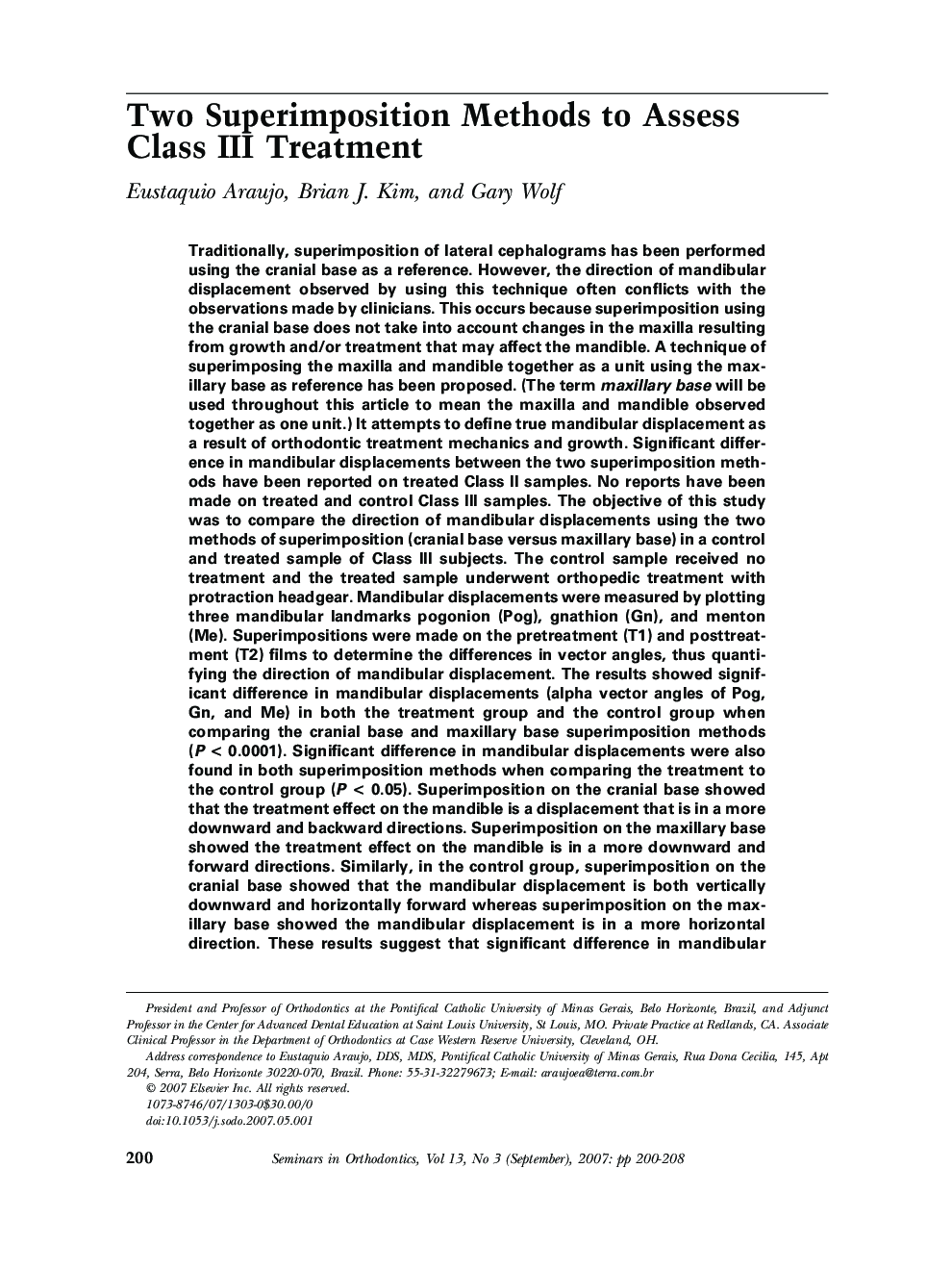| Article ID | Journal | Published Year | Pages | File Type |
|---|---|---|---|---|
| 3175779 | Seminars in Orthodontics | 2007 | 9 Pages |
Traditionally, superimposition of lateral cephalograms has been performed using the cranial base as a reference. However, the direction of mandibular displacement observed by using this technique often conflicts with the observations made by clinicians. This occurs because superimposition using the cranial base does not take into account changes in the maxilla resulting from growth and/or treatment that may affect the mandible. A technique of superimposing the maxilla and mandible together as a unit using the maxillary base as reference has been proposed. (The term maxillary base will be used throughout this article to mean the maxilla and mandible observed together as one unit.) It attempts to define true mandibular displacement as a result of orthodontic treatment mechanics and growth. Significant difference in mandibular displacements between the two superimposition methods have been reported on treated Class II samples. No reports have been made on treated and control Class III samples. The objective of this study was to compare the direction of mandibular displacements using the two methods of superimposition (cranial base versus maxillary base) in a control and treated sample of Class III subjects. The control sample received no treatment and the treated sample underwent orthopedic treatment with protraction headgear. Mandibular displacements were measured by plotting three mandibular landmarks pogonion (Pog), gnathion (Gn), and menton (Me). Superimpositions were made on the pretreatment (T1) and posttreatment (T2) films to determine the differences in vector angles, thus quantifying the direction of mandibular displacement. The results showed significant difference in mandibular displacements (alpha vector angles of Pog, Gn, and Me) in both the treatment group and the control group when comparing the cranial base and maxillary base superimposition methods (P < 0.0001). Significant difference in mandibular displacements were also found in both superimposition methods when comparing the treatment to the control group (P < 0.05). Superimposition on the cranial base showed that the treatment effect on the mandible is a displacement that is in a more downward and backward directions. Superimposition on the maxillary base showed the treatment effect on the mandible is in a more downward and forward directions. Similarly, in the control group, superimposition on the cranial base showed that the mandibular displacement is both vertically downward and horizontally forward whereas superimposition on the maxillary base showed the mandibular displacement is in a more horizontal direction. These results suggest that significant difference in mandibular displacement can be obtained when using different superimposition methods. The maxillary base superimposition technique demonstrates mandibular displacement more accurately as it incorporates all changes in the maxilla either by growth and/or treatment. In contrast, the cranial base superimposition technique is less accurate in displaying mandibular displacement since dental and skeletal changes in the maxilla are not included that may distort the true displacement of the mandible.
